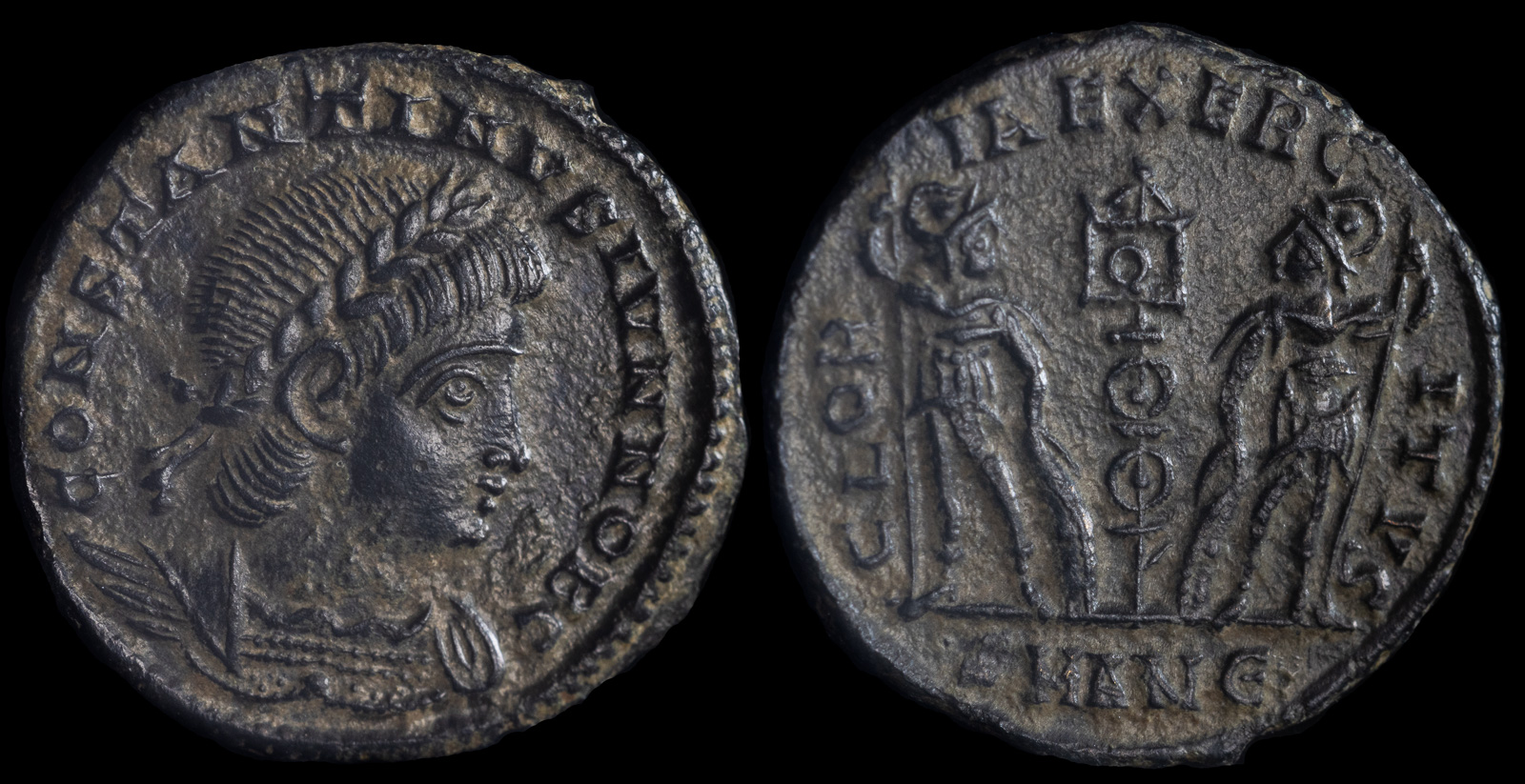Follis
View All Tags
The introduction of the follis was part of Diocletian’s broader efforts to reform the coinage system as the Roman Empire struggled with debasement, hyperinflation, and economic instability. Prior to these reforms, the Roman currency was largely based on silver and gold coins, such as the denarius and the aureus, but the economic difficulties of the time led to a greater reliance on lower-value bronze and copper coins. The follis, introduced around 294 AD, was one of the main denominations in this new coinage system, designed to be more suitable for everyday transactions. The follis was typically worth **one or two ** of the smaller nummus coins, but its value fluctuated as the Empire’s economy experienced inflationary pressures.
Under Diocletian’s reforms, the follis was stamped with the emperor’s image, usually depicted in a military or laureate portrait, reflecting the centralization of authority and the emphasis on imperial power. The reverse side of the follis typically featured symbols of the emperor’s reign, such as deities, victories, or allegorical figures like Felicitas (representing prosperity) or Pax (symbolizing peace), reinforcing the emperor’s role as a guarantor of stability and prosperity. Over time, the size and weight of the follis were subject to reductions, as the economic situation deteriorated and inflation continued to rise, with the coin becoming more symbolic than practical for high-value transactions.
The follis’s role as a bronze currency in the late Roman Empire was significant for several reasons. It facilitated local trade and smaller-scale commerce, but as inflation worsened, the follis became increasingly debased. By the early 4th century AD, the coin was often produced in very low-quality metals, losing much of its original value. Nevertheless, it remained a central part of the Roman economy throughout the Tetrarchy (the rule of Diocletian and his successors), and later into the reigns of emperors like Constantine the Great. Constantine eventually reformed the coinage further, leading to the introduction of the solidus, a gold coin that would eventually replace the follis as the dominant currency for more significant transactions, though the follis continued to be used in various forms for several more centuries.
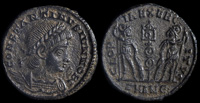
Constantine II 317-337 CE

Jovian 363-364 CE
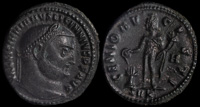
Licinius 308-324 CE
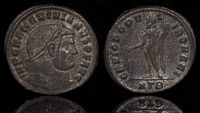
Maximianus 286-310 CE
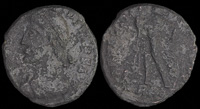
Procopius 365-366 CE

Severus II 305-306 CE
